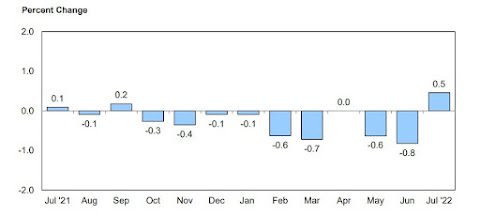In a new Wisconsin Rural Schools Alliance survey of 80 rural school districts, 74 percent said they’re still struggling to fill at least one support staff position, and 69 percent are still looking for at least one teacher. More than 16 percent are still short three or more teachers…. Over two-thirds of these schools have made changes to deal with staffing shortages, with at least 20 percent increasing class sizes, sometimes by 50 percent. Many said they’ve cut electives and extracurricular activities. Some have upped teachers’ workloads or combined positions. Others have moved teachers around or hired long-term substitutes, sometimes putting them in charge of classes they have no experience teaching…. Whitehall School District is among many districts struggling to fill crucial positions, according to Superintendent Mike Beighley. The district is short five support staff and one special education teacher. "We're just seeing a dramatic reduction in the number of applicants for positions," he said. "Where we used to get 20 or 30, or perhaps even 100, now we get very few, if any."So it’s not just big-city schools facing the crunch, and it’s something that likely needs to be addressed in the next state budget. Which leads to this story from Wisconsin Public Radio from today.
Wisconsin school districts are asking voters to approve a record $1.9 billion in spending authority through 70 referendum questions that will be on ballots Nov. 8. https://t.co/ULwiTy73Cf
— WPR (@WPR) August 29, 2022
At least 50 Wisconsin school districts will ask voters to approve tax hikes this fall, with districts seeking a record $1.9 billion in borrowing and spending authority in referendum questions on ballots around the state Nov. 8. Districts still have time to finalize additional ballot questions, but as of Friday there were 70 separate referendum questions from 50 school districts across the state going to voters. Around half of the questions seek borrowing authority for new buildings or maintenance projects. The rest ask for approval to exceed state revenue limits on temporary or ongoing basis to pay for education, operations or staffing. All told, the referendum questions seek $1.93 billion. Wisconsin Policy Forum Ari Brown told Wisconsin Public Radio the next highest total requested by schools was $1.77 billion in the April 7, 2020 election cycle, which included a $1.3 billion, 30-year referendum pitched by the Racine Unified School District that passed by five votes.This is where we need to remember that Wisconsin has $5 billion sitting in the bank right now, if the gerrymandered GOP Legislature chose to do something about this situation. Even if the tax cuts that Gov Evers wants were to go through, there still should be a few billion (only a few) to fill in the gaps on schools through the 2024 cliff as part of the next state budget. Another option could be for Governor Evers to announce a program that gives bonuses to schools to help them hire staff, and could conceivably use COVID funds to do so, as part of the new post-COVID reality. This can be done by having school districts document their new hires, as well as associated bumps in pay to retain staff, and pay them extra funds in return for doing so. It also could be based on the average teacher salary in an area, and give schools funds for teachers that are paid more than what is typical for their years of service (I’m sure there’s some kind of formula that can be figured). It also could be time for serious reform on how we fund schools in Wisconsin, and I don’t mean the scam of “vouchers for all” (which Tim Michels would want). I mean the big change of taking schools off of the property tax, and having state funds take up more of the costs. I think that moving schools off of the property tax would be a bigger impact than any income tax cut, to be honest. And I think we need to require revenue caps for districts to rise to meet reality, or at least a sizable fraction of inflation. I can’t see WisGOPs in the Legislature going for that (because how could they get all those Dirty DeVos dollars?), but I bet a lot of Wisconsin voters would. If this state wants to remain economically competitive, it’s got to stop starving its community schools and improve the chances that workers want to stay and raise their families here. And we have a rare chance to make the big changes that we need to reverse some of the damage that has been inflicted on our schools and communities in the 2000s. If we choose to.






















